If you’re looking for a fun looking to grow succulent that is adorably unique, look no further than the String of Dolphins plant! This fun succulent looks like a sea full of dolphins jumping in to the air (hence the name!).
This trailing succulent is similar to other “string of” varieties like the string of pearls, string of hearts, and string of bananas in that it is a great indoor plant and is especially great as a hanging plant. Cluster a few of these succulent plants together for a fun vibe!
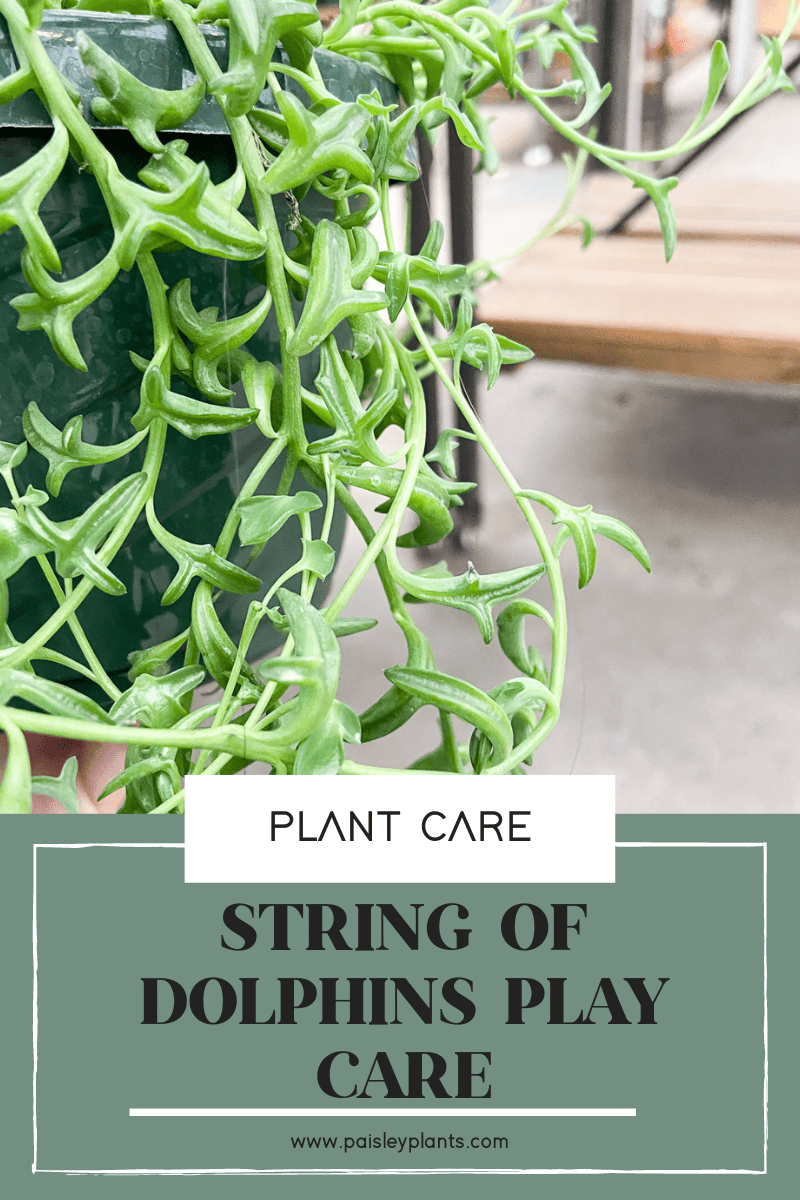
This post includes affiliate links.
Table of Contents
String of Dolphins History
The String of Dolphins, scientific name Senecio Peregrinus or Curio x peregrinus, is actually a hybrid between two species, the String of Pearls (Senecio rowleyanus) and the Candle Plant (or Hot Dog Cactus) (Senecio articulatus) and is in the Asteraceae family.
Apparently this plant originally was put into the genus Senecio but is currently in the genus Curio which is why you will see it called both Senecio Peregrinus and Curio x peregrinus.
It can grow up to 3 feet long and 6 inches tall. You can trellis this plant up or just allow it to hang over the pot. As mentioned above, it’s characterized by their dolphin-shaped leaves. This will help you know the difference between other “string of” plants! They also can bloom although mine has yet to do so!
Toxicity
This plant is toxic to cats and dogs. Be sure to keep it out of reach of kids and pets!
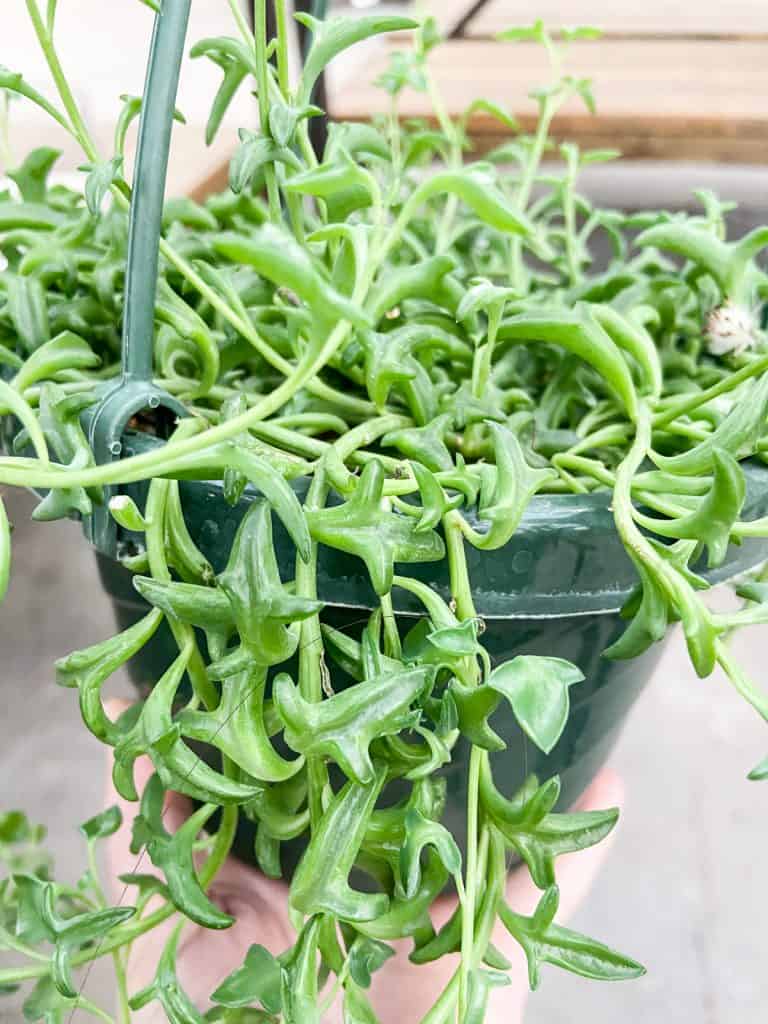
String of Dolphins General Care Instructions
The String of Pearls requires more maintenance than the other succulents but the time and effort spent will be worth it. If you are considering getting yourself this new plant or found yourself owning one, here are the general care instructions to ensure that your Dolphins will happily thrive and grow.
Light Requirements
Most succulents love direct sunlight. However, while the String of Dolphin succulent enjoys a bright environment, it cannot handle exposure to direct sunlight. Rather it prefers indirect light. Thanks to its leaf windows, this succulent can thrive even with slightly less sunlight.
Since the String of Dolphins can tolerate artificial light, this gives you more options on where to place them indoors. You can hang your succulent near windows that are east or west-facing so they can receive just the right amount of light.
I actually have them in a south-facing window for winter to ensure they get enough light and mine is thriving! I’ll likely move it in early spring so it doesn’t get too much sunlight.
You will know if your String of Dolphins got too much bright light because the leaves get scorched, turning yellow. Expect sparse foliage and unpleasant, leggy growth if it is not receiving as much sun as required.
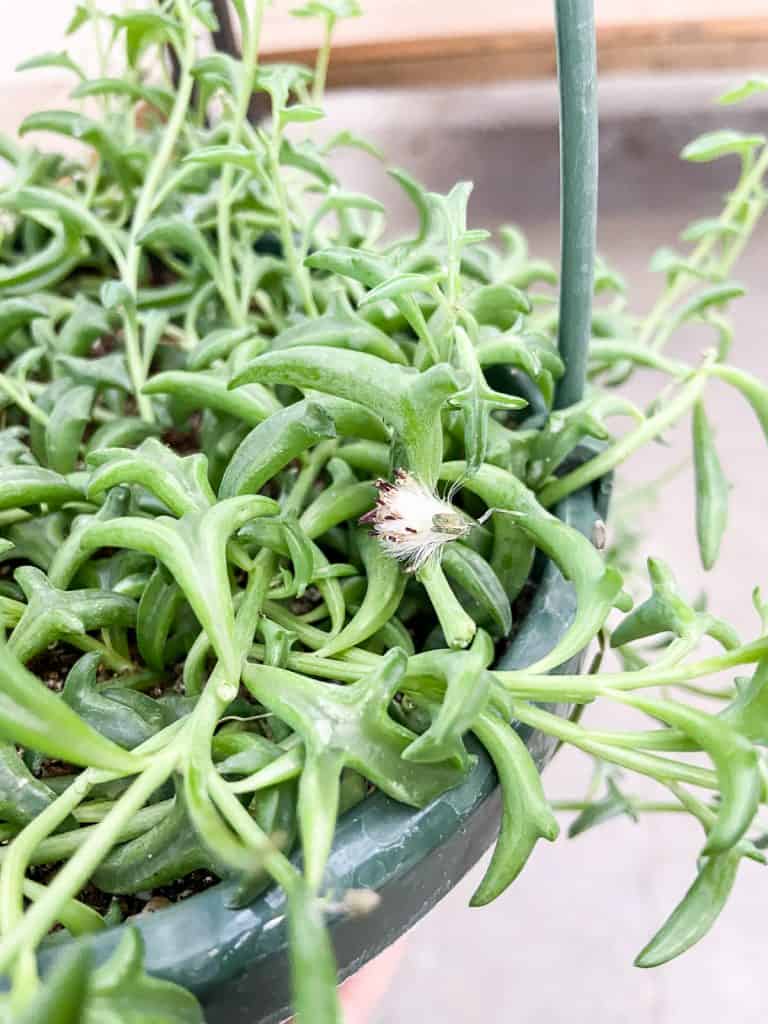
Water Requirements
This succulent is used to dry climates, and they don’t need much water. If you’re someone who frequently forgets to water your plants, good news…this one can tolerate episodes of drought and still survive. You can water the dolphin strings every week or so, and during the cooler months, you can opt for a once every two weeks schedule.
Before watering the String of Dolphins, always check and ensure that the top of the soil is dry.
Use the “Drench and Dry” approach in watering. Let your succulent have a long and nice drink. Just let the water run and give it enough time to be absorbed by the soil. You can then allow the excess water to be released from the draining holes at the bottom of the pot.
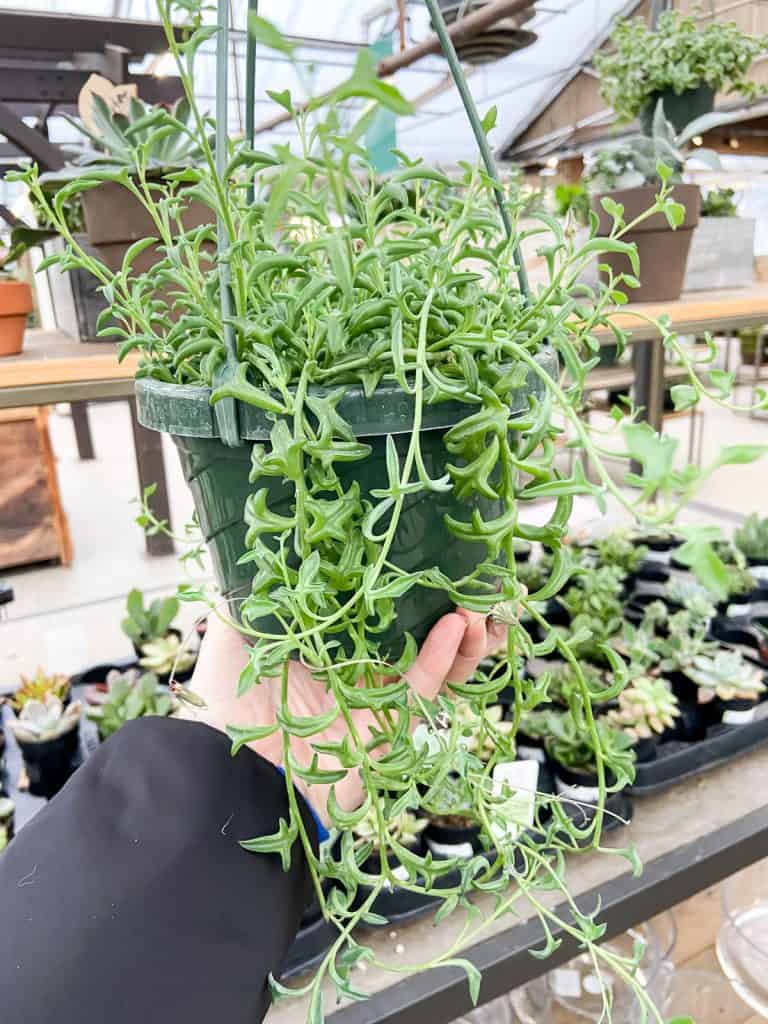
The next thing you need to be sure of is that the soil is mainly dry to avoid the roots of your String of Dolphins from drowning.
Using the ” Squish Test ” is another smart hack to know if your String of Dolphins already needs watering. The test helps guide you on how “thirsty” the succulent is.
Most of the moisture in succulents is held by their fleshy leaves. When full of water, the leaves are firm and nice. When they turn squishy, it is an indication that it’s time for a refill and you need to water them.
Aside from that specific utility, the leaves are also good indicators of your String of Dolphins’ overall health. If the leaves are squishy and brown, then the plant roots are most likely starting to rot.
Temperature Requirements
Like most succulents, the String of Dolphins succulents thrives in warmer temperatures of 70°F to 80°F (21°C – 27°C). They like the warm and dry climates, and room temperatures are best.
Note that the String of Dolphins gets stressed when directly exposed to cooler temperatures from cold drafts and air conditioning. As expected, they don’t like the winter season, so you need to transfer your greens near warmer places like the furnace or radiators.
If your String of Dolphins is outdoors, a temperature range of 40°F to 70°F (4.5°C – 21°C) in full to partial shade is just what they need. Be sure to bring them indoors during the winter months if it gets cold where you are!
Humidity Requirements
These dangly succulents love dry air and don’t need high humidity levels, which is common in most homes. They don’t require additional humidity when you place them indoors.
The String of Dolphins prefers humidity levels below 50 percent. This shouldn’t be much of a problem for those in warmer climates. If the leaves start falling off, this is a sign that the String of Dolphins site is too humid.
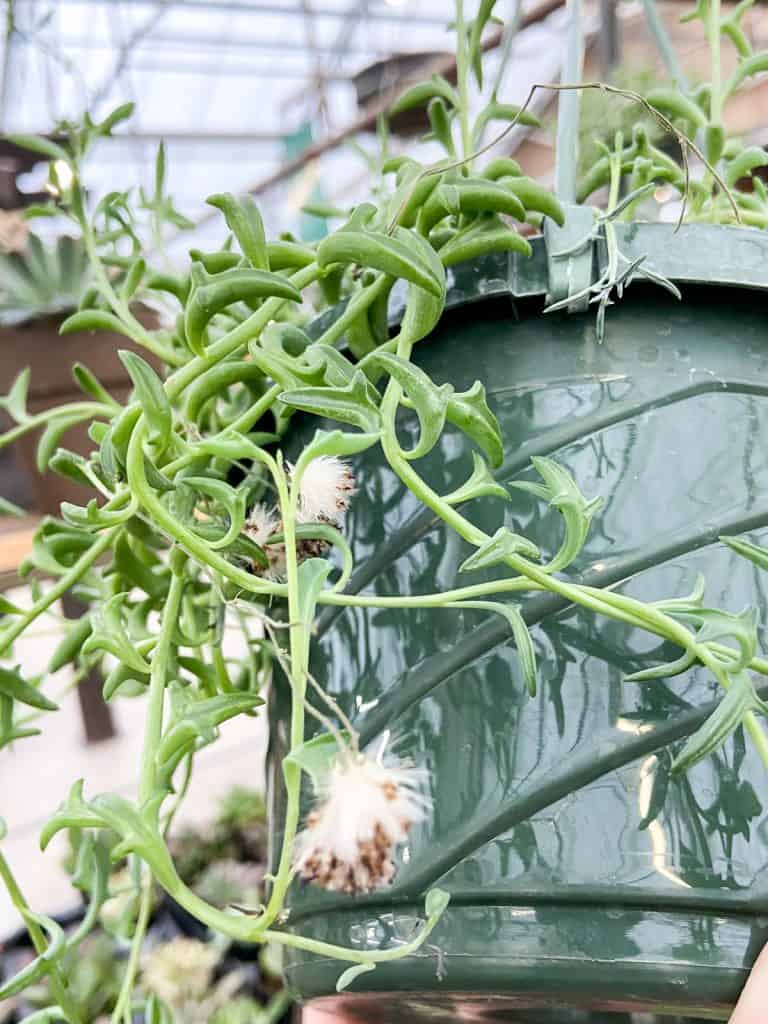
Soil Requirements
The best succulent soil for the String of Dolphins needs to be a well-draining soil. You’ll also want a pot with drainage holes. If you use clay soil known to be dense and hold too much moisture, or a pot without a drainage hole, you’ll end up with soggy, waterlogged soil. This can cause root rot and decay.
You can have your mix of soil and add perlite into it. Remember, two parts perlite with one part houseplant potting soil is the golden ratio.
You will know if you have the right soil mix if the soil dries up in four to five days. And you can also incorporate pea gravel, peat moss, and pumice to make your soil more porous.
If the DIY route isn’t for you, you also have the option to purchase the ready-made soil cactus mix intended for cactus plants.
Fertilizer Requirements
Not that the String of Dolphins needs it but when you opt to provide additional sustenance to your succulent, go for an organic fertilizer like liquid kelp, worm compost, and fish emulsion.
Over-fertilizing your plant is not suggested. Too much fertilizer application will stimulate too much growth and the leaves lose their beautiful dolphin shape.
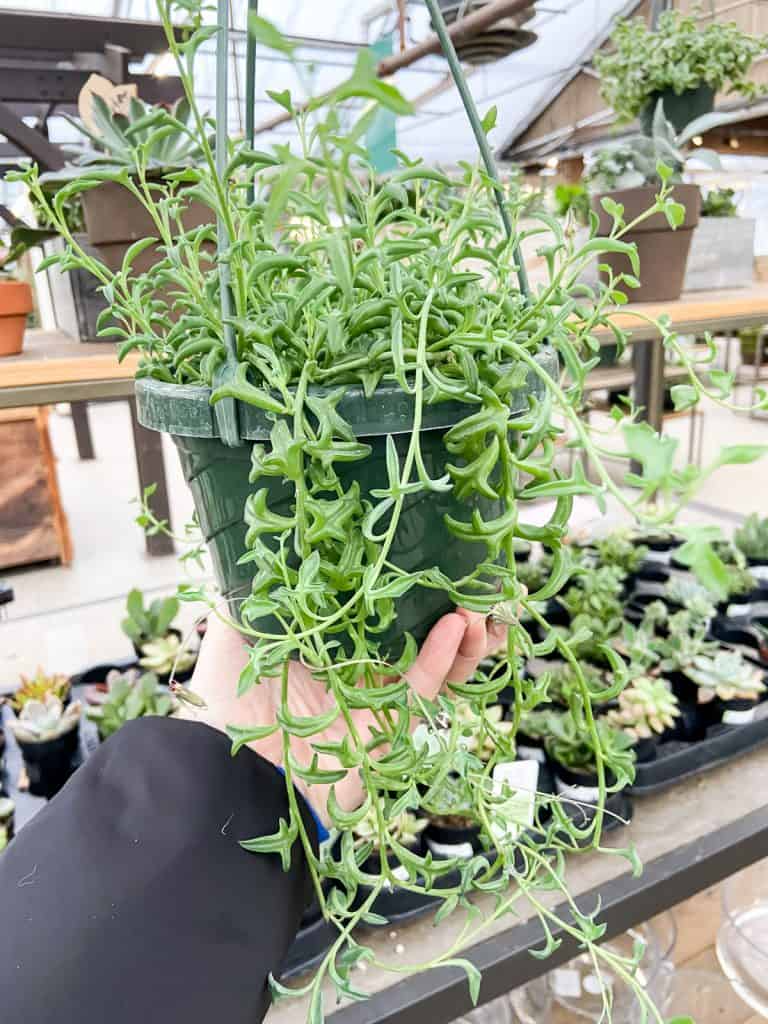
Propagation
String of Dolphins can easily be propagated through stem cuttings. You can do this via water propagation or by simply placing the stem cutting that has been calloused over into soil. Personally I think the best way to propagate most plants is through water propagation simply because I know if it worked or not!
I have a full post on how to best propagate your String of Dolphins to help!
Pests
When these plants are grown as indoor plants they can sometimes be susceptible to spider mites or mealybugs. These can be cared for by wiping down the leaves (top and bottom) to remove these common houseplant pests. If that doesn’t work, you can try using cotton swabs with rubbing alcohol to get rid of mealy bugs.
Spider mites can be removed by spraying with water. You can also use a insecticidal soap for either of these pests.
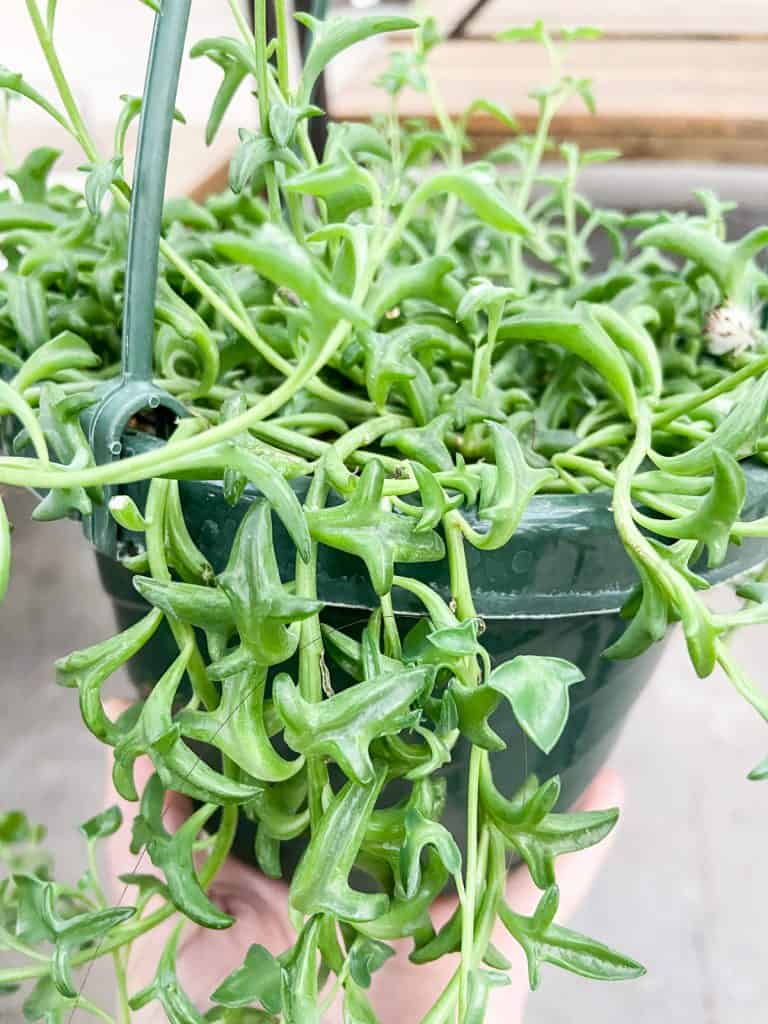
Where to Buy
Tips for Success
Everyone wants their String of Dolphins to thrive and multiply because lush and healthy foliage provides you with that deep satisfaction knowing that you are doing the best you can for the plants.
Here are other tips to ensure the success of your journey in your planting, growing, and propagating journey with String of Dolphins.
- Pests like aphids, scale, mealybugs, and spider mites can wreak havoc. Make sure that your String of Dolphins is not exposed to any of these sap-suckers.
- Always use pots with drainage holds when repotting and propagating this succulent.
- Terracotta pots are highly advisable because their clay component helps absorb the moisture from the roots.
- Do not water this succulent in a “little-and-frequent” schedule because it can cause the roots to become thirstier, attracting gnats and spider mites in the process.
- Let your tap water sit overnight so the particulates and chemicals settle down. This will also help you achieve the desired room temperature.
FAQ
String of Dolphins do best with about 6 hours of indirect sunlight each day.
String of Dolphins are very drought resistant and need water about every 1-2 weeks. Always check the soil to see if the soil is damp or dry before watering.
And there you have it! All the care tips that you need to know for caring for your String of Dolphins plants. I hope this helps you in growing happy, healthy plants!

